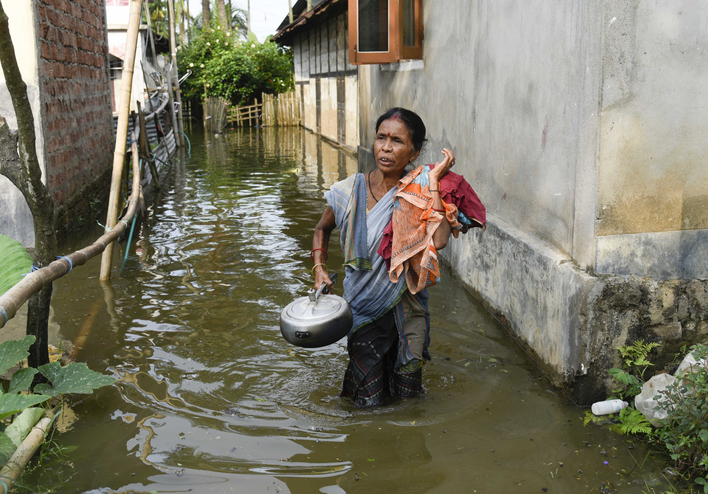This blog is part of a series organised in conjunction with the 19th global development conference.
The 17th of the Sustainable Development Goals – ‘partnerships for the goals’ aims to ‘strengthen the means of implementation and revitalize the global partnership for sustainable development’. This column – an entry in GDN’s international youth blog competition – makes the case for increased engagement of lay people in those partnerships. It highlights research on nomadic families in Chad, which shows the importance of building trust with local communities for addressing the big challenges of development.
The value of well-managed partnerships and collaboration in development research is well-recognized. Problems are often complex and may require multiple disciplines to address them. This is true for the Sustainable Development Goals (SDGs). An example in which research and professional partnerships are showing promise for achieving global health is One Health, a field that promotes collaboration among researchers in human health, animal health, and environmental science.
But most of the focus is on professional partnerships, while the benefits of partnership with communities and lay people have largely been ignored. Yet every individual and community for whom the SDGs are relevant is a potential partner for the SDGs. A sense of ownership by all stakeholders would help to propel the achievement towards the goals.
The nineteenth century work of physician John Snow provided one of the earliest evidences of the importance of social determinants of health. He showed that the cholera epidemic was partly a function of prevailing economic, social, and cultural circumstances. Considered as the father of modern epidemiology, he was able to achieve his results by recognizing that the people affected by cholera held valuable information that could help halt to the epidemic. The same principle applies today, but its potential is not being fully realized.
A 2012 World Bank document synthesizes the economic benefits of zoonotic disease control. These types of publications are crucial because they provide evidence on the need for prioritization of these diseases. But many studies reported in the document quantifying the benefits of inter-sectoral partnerships for disease control focus on professionals and organizations.
One exception is a study of nomadic families in Chad, which shows that by engaging with them, thereby understanding their circumstances and disposition towards livestock vaccination, successful interventions could be designed to combine livestock vaccinations with more valued child vaccination programs. The research concludes that ‘pastoralists no longer refused vaccination of their livestock as had sometimes been the case before veterinarians were accompanied by medical personnel’.
The success of such programs is dependent on appropriate engagement with communities. Communities understand their circumstances better than external experts, making them suitably placed to propose or help identify sustainable strategies.
For example, a study that identifies the consumption of dead animals as a risk factor of zoonotic disease transmission may suggest that the practice is due to a lack of knowledge and awareness of the risks. Experts may propose behavioral change intervention through increasing awareness. On the contrary, communities may understand the risk, but be willing to take it due to food insecurity, or cultural issues associated with waste avoidance. In such situations, vaccinations against diseases in animals may be identified as a more viable intervention.
In addition, when research and interventions end, community action is the vehicle that can sustain and advance the resulting benefits. To avoid the benefits ending with cessation of research and interventions, adequate engagement is vital. The Chad study also shows that by appropriate engagement, new interventions can leverage on already existing social capital built in communities by older interventions.
Trust-building with communities is critical to the success of research and its implementation. Programs that take this reality for granted risk failure. Efforts to control the Ebola crises in West Africa were undermined by mistrust (among other factors). This was proof that without engaging with communities in the appropriate ways, development programs are likely to face major implementation and sustainability problems, leading to the waste of time, money, and other resources.
The research on nomads in Chad shows how crucial trust is for addressing development problems. In many parts of sub-Saharan Africa, where most of the SDGs remain to be achieved, communities operate a system of localized ‘gatekeepers’, often with one coordinated voice that can determine the fate of any development strategy.
While the importance of partnering with communities is clear, it can be challenging and difficult to engage with lay people. For example, communities may have different priorities, or be dissatisfied with issues like decision-making, receiving recognition or access to resources.
To avoid these problems, partnerships must value mutual respect, and understand the purpose of the partnership. Mechanisms for negotiation, conflict resolution, and decision-making should be enacted. Engaging with communities at the onset will help to identify issues that may significantly undermine research activities or interventions.
The importance of partnering with communities is now being recognized. Some funding organizations support occasional public engagement events, and making it an integral part of programs will achieve the maximum benefits.
To ensure that communities are properly engaged in the research that will affect them, world governing bodies (such as the United Nations, the World Organization for Animal Health, and the World Health Organization), research and program funders can provide leadership by ensuring that the projects they fund and support have a clear strategy for partnering with local communities. The Global Development Network supports this stance and can use its programs, partnerships, and collaborations to advance this cause further.
In conclusion, the argument has been made for engaging communities in planning and implementing research and interventions to address the SDGs. The 17th of the SDGs is crucial, and it does not refer only to partnerships between organizations, professionals, and governments, but also to lay people and the communities that the SDGs target. The important social capital that these communities possess will enhance the generation, uptake, and sustainability of solutions.






